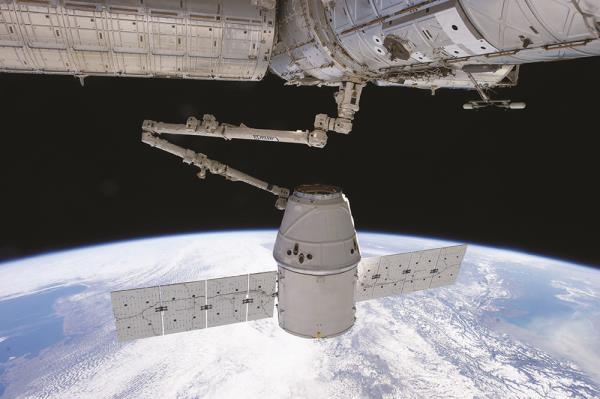31 October 2017

SpaceX’s Dragon spacecraft is used to deliver cargo to the International Space Station for NASA.
On 14 August, SpaceX successfully launched its Dragon spacecraft to deliver critical cargo to and from the International Space Station (ISS) for NASA. Part of the Dragon’s payload was a supercomputer from Hewlett Packard Enterprise (HPE).
The Spaceborne Computer will be used to support a year-long experiment conducted by HPE and NASA to run a high-performance commercial off-the-shelf computer system in space. This has never been done before, and the aim is for the system to operate seamlessly in the harsh conditions of space for one year – roughly the amount of time it will take to travel to Mars.
HPE says many of the calculations needed for space research projects are still done on Earth due to the limited computing systems available on board orbiting vessels.
As well as creating a challenge when transceiving data, this approach only works when astronauts are in near real-time communication with Earth. Therefore, once they travel farther out and closer to Mars, they will experience longer latencies. This could mean it would take up to 20 minutes for communications to reach Earth and then another 20 minutes for responses to reach astronauts. This would make any on-the-ground exploration challenging and potentially dangerous if astronauts are met with any mission critical scenarios that they’re not able to solve themselves.
The Spaceborne Computer includes HPE’s Apollo 40 class systems with a high-speed HPC interconnect running an open-source Linux OS. Although there are no hardware modifications to these components, HPE says it created a “unique” water-cooled enclosure for the hardware and developed purpose-built software to address the reliability requirements of supercomputing in space.
Generally, in order for NASA to approve computers for space, the equipment needs to be ‘ruggedised’ or hardened to withstand the harsh conditions of space. But because this physical hardening takes time, money and adds weight, HPE says it took a different approach and ruggedised the system using software. This will manage real-time throttling of the computer systems based on current conditions and can mitigate environmentally induced errors, says HPE.
Once the researchers learn more about how the Spaceborne Computer reacts in space, future phases of the experiment will eventually involve sending other new technologies and advanced systems, such as memory-driven computing, to the ISS.










